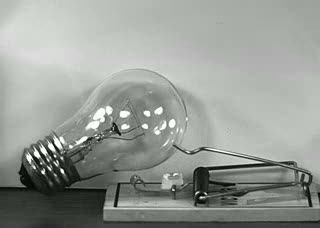Yüksek hızlı kamera
High speed camera
A high speed camera is a device used for recording slow-motion playback films, or used for scientific study of transient phenomena.[1]
A normal motion picture is filmed and played back at 24 frames per second, while television uses 25 frames/s (PAL) or 29.97 frames/s (NTSC). High speed cameras can film up to 250,000 frames/s by running the film over a rotating prism or mirror instead of using a shutter, thus reducing the need for stopping and starting the film behind a shutter which would tear the film stock at such speeds. Using this technique one can stretch one second to more than 10 minutes of playback time (super slow motion). The fastest cameras are generally in use in scientific research, military test and evaluation, and industry. An example of an industrial application is crash testing to better document the crash and what happens to the automobile and passengers during a crash. Television series such as MythBusters and Time Warp often use high speed cameras to show their tests in slow motion. The fastest high speed camera has the ability to take pictures at a speed of 200 million frames per second.[2]
A problem for high speed cameras is the needed exposure for the film, so one needs very bright light to be able to film at 40,000 frames/s sometimes leading to the subject of examination being destroyed because of the heat of the lighting.
Even higher speed imaging is possible using specialized electronic charge-coupled device (CCD) imaging systems which can achieve speeds of up to or in excess of 25 million frames per second. All development in high speed cameras is now focused on digital video cameras which have many operational and cost benefits over film cameras.
Recent advances in the form of image converter devices are able to provide temporal resolutions of less than 50 picoseconds, equivalent to over 100,000,000,000 frames per second. These instruments operate by converting the incident light (consisting of photons) into a stream of electrons which are then deflected onto a photoanode, back into photons, which can then be recorded onto either film or CCD.
